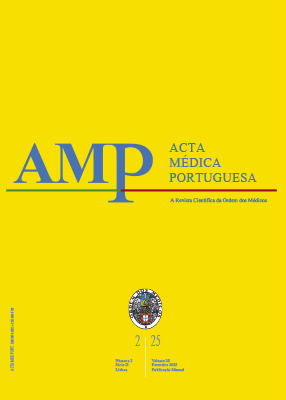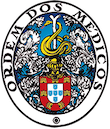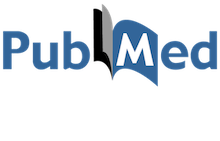Translation and Cultural Adaptation of the ISTH-Bleeding Assessment Tool to European Portuguese
DOI:
https://doi.org/10.20344/amp.22374Keywords:
Blood Coagulation Disorders, Patient Reported Outcome Measures, Portugal, Surveys and Questionnaires, TranslationAbstract
Introduction: A distinctive bleeding history is the first diagnostic stage of congenital hemorrhagic diseases. Furthermore, since it is in fact an assessment of the patient’s phenotype, it is not a (mere) complementary diagnostic method or test - it is an integral and intrinsic step to establish the patient’s clinical history, which is a medical act. The International Society on Thrombosis and Haemostasis-Bleeding Assessment Tool (ISTH-BAT) is a standardized bleeding assessment tool used during the diagnostic workup of suspected bleeding disorders. This study aimed to translate and culturally adapt the ISTH-BAT questionnaire to the European Portuguese language.
Methods: The translation and cultural adaptation were based on the International Society for Pharmacoeconomics and Outcomes Research Guidelines and initiated after obtaining permission from the authors. The process involved three English to European Portuguese independent forward translations and a back translation. Discrepancies were gradually resolved. A harmonized version was presented to hemophilia patients and hemophilia carriers for cognitive debriefing.
Results: The forward and back translations did not produce important discrepancies. However, some issues were identified in the cognitive debriefing, which led to the cultural adaptation of medical terms for better understanding.
Conclusion: A formal translation and cultural adaptation process ensures that the new version maintains the same concepts as the original. After translation, several changes were necessary to ensure that the questionnaire was understandable by non-medical patients. We propose a European Portuguese version of the ISTH-BAT, which will require validation in further studies.
Downloads
References
Castaman G, Linari S. Diagnosis and treatment of von Willebrand disease and rare bleeding disorders. J Clin Med. 2017;6:45.
Biss T, Sibson K, Baker P, Macartney C, Grayson C, Grainger J, et al. Haematological evaluation of bruising and bleeding in children undergoing child protection investigation for possible physical maltreatment: a British Society for Haematology good practice paper. Br J Haematol. 2022;199:45-53.
Bowman M, Mundell G, Grabell J, Hopman WM, Rapson D, Lillicrap D, et al. Generation and validation of the condensed MCMDM-1VWD bleeding questionnaire for von Willebrand disease. J Thromb Haemost. 2008;6:2062-6.
Elbatarny M, Mollah S, Grabell J, Bae S, Deforest M, Tuttle A, et al. Normal range of bleeding scores for the ISTH-BAT: adult and pediatric data from the merging project. Haemophilia. 2014;20:831-5.
Rodeghiero F, Tosetto A, Abshire T, Arnold DM, Coller B, James P, et al. ISTH/SSC bleeding assessment tool: a standardized questionnaire and a proposal for a new bleeding score for inherited bleeding disorders. J Thromb Haemost. 2010;8:2063-5.
Rodeghiero F, Pabinger I, Ragni M, Abdul-Kadir R, Berntorp E, Blanchette V, et al. Fundamentals for a systematic approach to mild and moderate inherited bleeding disorders: an EHA consensus report. Hemasphere. 2019;3:e286.
Borhany M, Fatima N, Abid M, Shamsi T, Othman M. Application of the ISTH bleeding score in hemophilia. Transfus Apher Sci. 2018;57:556- 60.
Tosetto A, Rodeghiero F, Castaman G, Goodeve A, Federici AB, Batlle J, et al. A quantitative analysis of bleeding symptoms in type 1 von Willebrand disease: results from a multicenter European study (MCMDM-1 VWD). J Thromb Haemost. 2006;4:766-73.
Gresele P, Orsini S, Noris P, Falcinelli E, Alessi MC, Bury L, et al. Validation of the ISTH/SSC bleeding assessment tool for inherited platelet disorders: a communication from the Platelet Physiology SSC. J Thromb Haemost. 2020;18:732-9.
Corrales-Medina FF, Federici AB, Srivastava A, Dougall A, Millar CM, Roberts JC, et al. A need to increase von Willebrand disease awareness: vwdtest.com - a global initiative to help address this gap. Blood Rev. 2023;58:101018.
James PD, Mahlangu J, Bidlingmaier C, Mingot-Castellano ME, Chitlur M, Fogarty PF,et al. Evaluation of the utility of the ISTH-BAT in haemophilia carriers: a multinational study. Haemophilia. 2016;22:912- 8.
Laffan MA, Lester W, O’Donnell JS, Will A, Tait RC, Goodeve A, et al. The diagnosis and management of von Willebrand disease: a United Kingdom Haemophilia Centre Doctors Organization guideline approved by the British Committee for Standards in Haematology. Br J Haematol. 2014;167:453-65.
James PD, Connell NT, Ameer B, Di Paola J, Eikenboom J, Giraud N, et al. ASH ISTH NHF WFH 2021 guidelines on the diagnosis of von Willebrand disease. Blood Adv. 2021;5:280-300.
Rydz N, James PD. The evolution and value of bleeding assessment tools. J Thromb Haemost. 2012;10:2223-9.
Wild D, Grove A, Martin M, Eremenco S, McElroy S, Verjee-Lorenz A, et al. Principles of good practice for the translation and cultural adaptation process for patient-reported outcomes (PRO) measures: report of the ISPOR Task Force for Translation and Cultural Adaptation. Value Health. 2005;8:94-104.
Punt MC, Blaauwgeers MW, Timmer MA, Welsing PM, Schutgens RE, van Galen KP. Reliability and feasibility of the self-administered ISTHbleeding assessment tool. TH Open. 2019;3:e350-5.
Downloads
Published
How to Cite
Issue
Section
License
Copyright (c) 2025 Acta Médica Portuguesa

This work is licensed under a Creative Commons Attribution-NonCommercial 4.0 International License.
All the articles published in the AMP are open access and comply with the requirements of funding agencies or academic institutions. The AMP is governed by the terms of the Creative Commons ‘Attribution – Non-Commercial Use - (CC-BY-NC)’ license, regarding the use by third parties.
It is the author’s responsibility to obtain approval for the reproduction of figures, tables, etc. from other publications.
Upon acceptance of an article for publication, the authors will be asked to complete the ICMJE “Copyright Liability and Copyright Sharing Statement “(http://www.actamedicaportuguesa.com/info/AMP-NormasPublicacao.pdf) and the “Declaration of Potential Conflicts of Interest” (http:// www.icmje.org/conflicts-of-interest). An e-mail will be sent to the corresponding author to acknowledge receipt of the manuscript.
After publication, the authors are authorised to make their articles available in repositories of their institutions of origin, as long as they always mention where they were published and according to the Creative Commons license.









